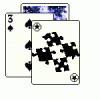Hello, my question is how to teach the player how to understand and navigate through the controls of the game in the guise of a normal level. What would be an ideal set of rooms, and what would be in those rooms to get the player comfortable with the later more advanced stages?
My reason for asking this, is my brothers and I recently released a game (can be found in the indie-game forum section: http://www.gamedev.net/topic/649361-spheroid/#entry5104428), and was met with a lot of players saying that the game was too hard, or too confusing, or was not very well explained. So, I'd really like to change that, and we have decided that before any missions, the first "mission" should be specifically designed to get the player familiar with the game.
Things I want the player to be familiar with:
-Controls for character-
-Reading Radar-
-identifying-
-unlocking doors-
-collecting all items in the area-
This might make a lot more sense if you try the game. But even just in theory, the main thing is getting the player accustomed to the controls. I got the basic idea of having a single simple enemy in the room. But should I just have a text message (from a character) tell you "fire with left click"? Or should I just let them figure it out?
Thank you for your time,
-Shade-










